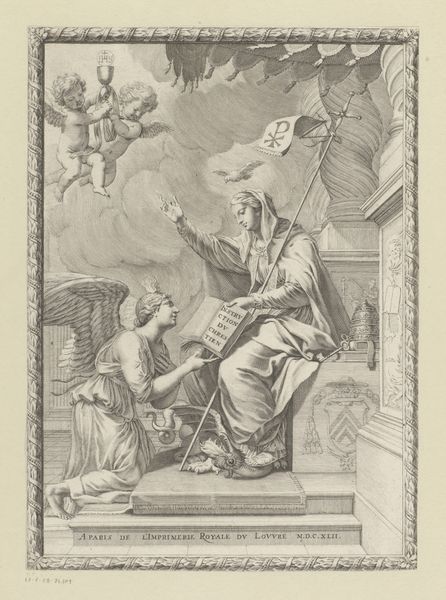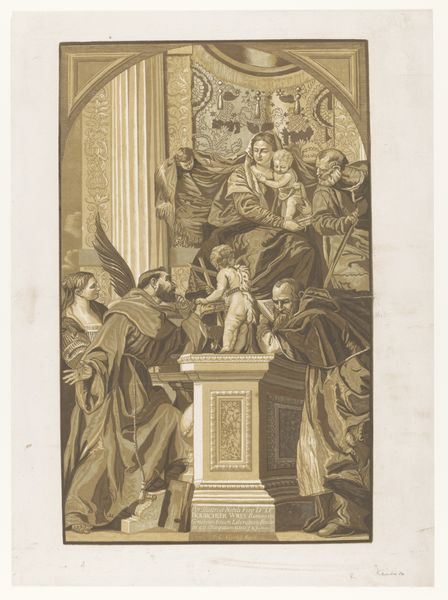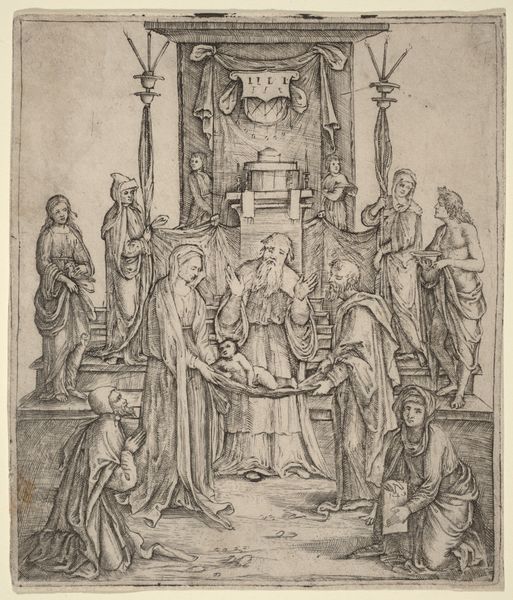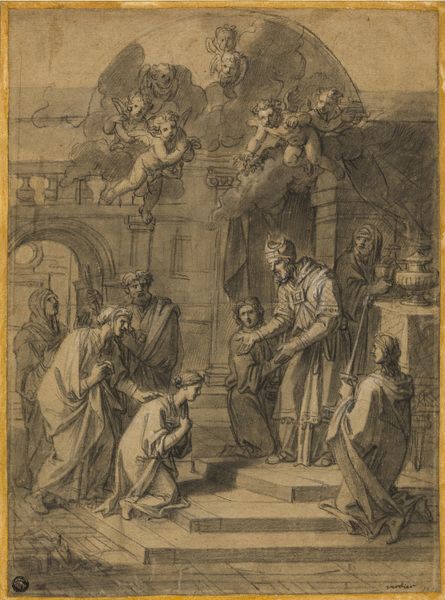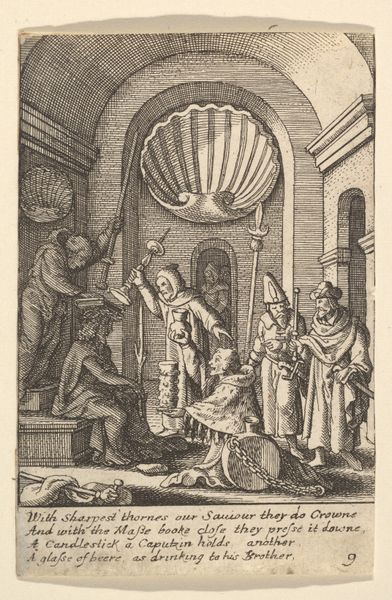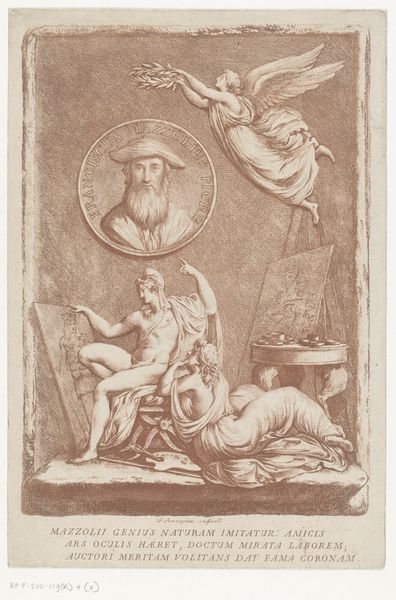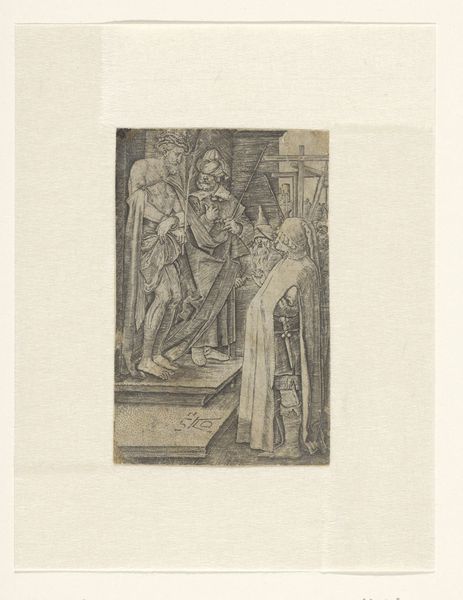
The Madonna and Child Enthroned with a Bishop Saint and a Kneeling Ecclesiastic c. 1820s
0:00
0:00
drawing, paper, ink
#
portrait
#
drawing
#
figuration
#
paper
#
11_renaissance
#
ink
#
history-painting
#
academic-art
Dimensions: image: 24.5 × 16.9 cm (9 5/8 × 6 5/8 in.) sheet: 29.8 × 22.2 cm (11 3/4 × 8 3/4 in.)
Copyright: National Gallery of Art: CC0 1.0
Editor: Here we have Luigi Brenta's "The Madonna and Child Enthroned with a Bishop Saint and a Kneeling Ecclesiastic," likely from the 1820s, created with ink on paper. It strikes me as quite traditional in its subject, but there's something almost draft-like about the lines, exposing the artistic process. What elements stand out to you? Curator: I am particularly drawn to the materiality of the drawing itself. Look at the paper, its likely source and the process of its manufacture. The type of ink employed would be interesting to investigate. Also, note the marks and smudges left by the artist - vestiges of the artistic labour. The subject, religious iconography, seems almost secondary. Consider where Brenta sourced these materials, how they were made, and how they connect to the broader economic and social conditions of the time. Editor: So, it's less about the religious symbolism and more about the physical construction of the image as a product of its time? Curator: Precisely. Consider also the societal role of paper production. Was Brenta making preliminary studies, exploring ways of representing religious icons in his specific local context? These studies could have functioned within the larger economy for similar devotional images. How might a closer examination of materials tell us more about workshop practices or specific artistic training that Brenta experienced? Editor: That's a very different way to approach this piece! It’s made me reconsider the drawing's place within the artistic and social landscapes of its period. Thank you. Curator: Indeed. By investigating these material traces, we access another narrative.
Comments
No comments
Be the first to comment and join the conversation on the ultimate creative platform.


